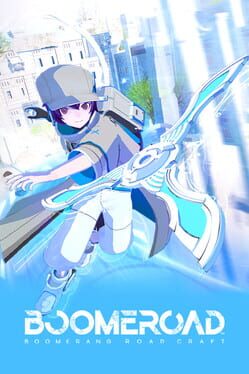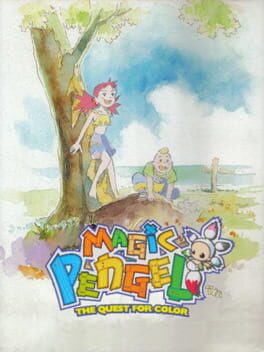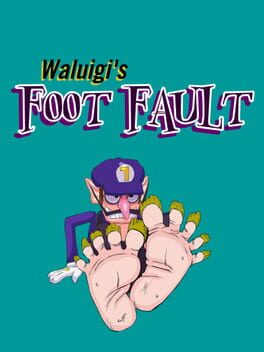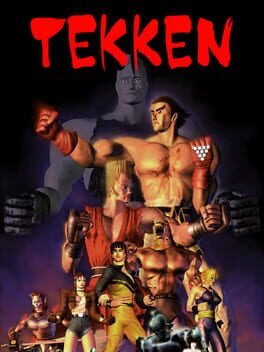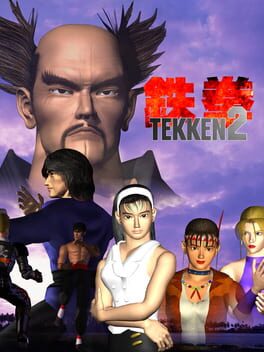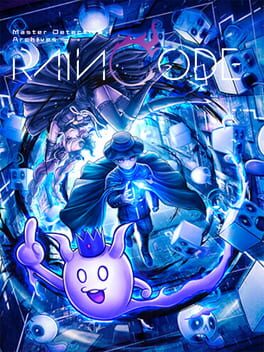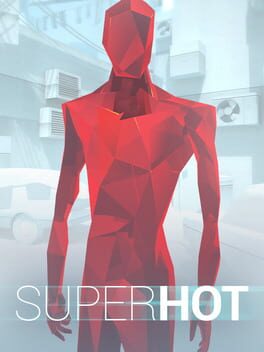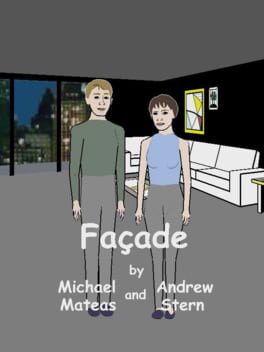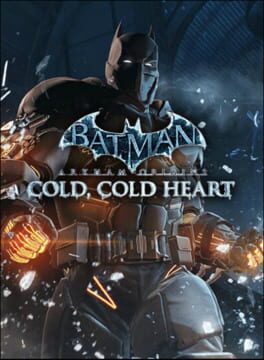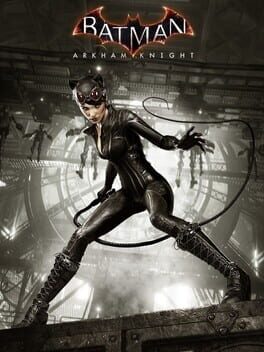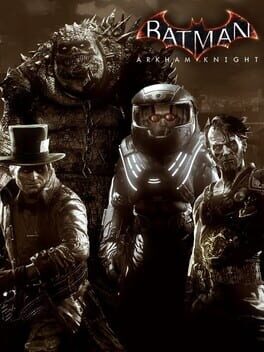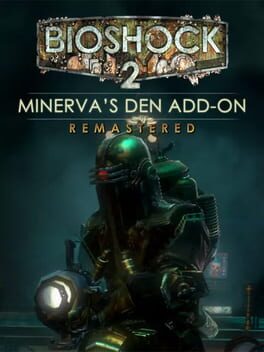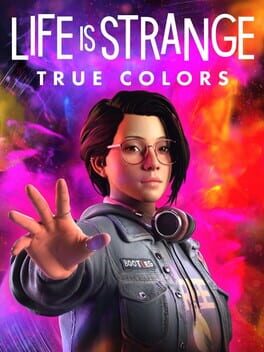1023 Reviews liked by HuFe
Boomeroad
2024
Bandai-Namco released Boomeroad worldwide two days ago as part of a suite of simple and experimental games to train new recruits from their indie developer Gyaar Studio. The concept here combines a standard 3D platformer with boomerang throwing that creates grindable rails that can be chained for extended mid-air traversal. You refresh your energy gauge by passing through rings and landing on platforms, and you can increase the gauge's capacity by collecting optional artifacts. Unfortunately, the gameplay is undercooked. You can't adjust the shape of the boomerang's arc besides flattening the upward curve a little, there's very few interactable objects (switches and fans) that force the player to throw the boomerang at them for activation, and you can in fact avoid most of these elements entirely by throwing two chained boomerang arcs to climb up and walk on top of the level's walls, skipping entire sections of the level while never running out of gauge. While I thought speedrun mode would mitigate most of these shortcomings, I don't find the movement satisfying enough because there's fairly little momentum conserved upon jumping off of rails for speeding up, so the movement itself lacks weightiness and route planning isn't very interesting when you're incentivized to just follow the set path of rings for time bonuses. I suppose there's only so much I can complain about a free game nevertheless, and although I don't see Gyaar Studio returning to this, I do think they've got a solid concept on their hands that could prove to be an interesting 3D puzzle-platformer if thoroughly fleshed out with more committal movement and tighter level design.
I will be upfront here and admit that my initial impression of Magic Pengel was underwhelming. The first couple of hours felt extremely plodding, thanks to the opening glut of story cutscenes with awkward voice acting, the lack of part variety to attach to your Doodles (your drawable monsters for battle), and the initial grind for more colors necessary to both draw and further develop your Doodles. This initial grind can be a nightmare because a lot of the fightable villagers will easily outclass you in terms of sheer stats and stall you out by using Charge every other turn to heal off more damage than you can inflict, so you’ll end up wasting your arena time if you happen to challenge a super tough villager since there’s also no way to forfeit a match. It also doesn’t help that there’s a half minute loading screen every time you need to move to a new area in the overworld, so you’ll end up sitting through over a minute of loading screens moving between the two main arenas alone since there’s no fast travel and you’ll have to pass through the market every time. Not a great start for a seemingly great premise!
Get past this initial roadblock by winning a few arena matches and gaining enough resources to thoroughly flesh out your Doodles with better stats, however, and the game starts to find its footing. Combat is almost entirely turn-based rock-paper-scissors (magic trumps attack, attack trumps block, block trumps magic) with some degree of mind games. This fortunately does get a bit more complex later on; landing magic spells can inflict status effects such as paralysis and sleep upon foes, as well as temporarily lock or punish types of attacks depending on the spell used. This essentially adds another layer to the mind games, aside from the aforementioned Charge for healing/powering-up the next attack/resetting neutral; thus, combat isn't just mindlessly following the advantage triangle specified above. In addition, the colors and parts used (i.e. adding limbs, wings, a held weapon, etc) drastically change both your stat and skill distribution (explained in more detail here and here ), and since your drawing capabilities and max capacity are increased with each arena win, you’ll likely be redrawing your Doodles all the time anyways to keep up with the tougher fights while tinkering with new and expanded loadouts. Simultaneously, it becomes a lot easier to farm resources since your Doodles will finally have enough attack power to deal more damage than opponents can heal off with Charge, and you’ll earn significantly more of each color (a few thousand as opposed to a few hundred in the early game) upon victories. While Magic Pengel’s combat never reaches the depth of similar monster battling systems such as Pokemon, I nevertheless found it easy enough to get into the rhythm of the progression loop once I got past the opening grind, and it served as a solid podcast game that vaguely reminded me of my days laddering on Pokemon Showdown.
A word of warning though: as much fun as it is sketching crude creatures with your Pengel and watching your crayon abominations destroy developer-drawn Doodles with much more effort put into sketching, that is unfortunately just about all that this game has to offer. Magic Pengel’s narrative touches upon some interesting lore and story beats concerning both the world of color and the supporting cast (such as your friend Zoe’s connection with her missing foster father, a renowned Doodler that once worked for the king), but the game never goes into too much detail with its sparse storytelling, and it ends on a bit of a cliffhanger as your friends decide to set off on another adventure. While you can sell spare colors for gold gems, there’s not much to purchase from shopkeepers; you can buy a few brushes to further adjust your line thickness, but the only other items on offer are Doodles, and there’s no point in buying those when you’ll get far more utility out of drawing your own (especially because you can’t delete any part of a Doodle drawn by an NPC). Finally, the game is a bit lacking in post-game content. The only unlocked features are a new arena where you can engage in 1 v 3 or 2 v 3 fights for higher rewards, as well as a hidden boss that can be fought if you somehow grind one million gold gems. As such, I have to concede that a lot of the Magic Pengel’s surrounding elements could have used some more time in the oven.
Ultimately, I prefer the game’s spiritual successor Graffiti Kingdom for its more succinct runtime and expanded drawing utensils. Even so, I mostly enjoyed my time with Magic Pengel (the quaint charm and artstyle admittingly a big reason why), and I’d say it’s worth checking out if you want a taste of one of more creative monster collecting/creating games out there. I think Taito had something really special on their hands with this formula, and it’s a shame we’ll never see a game in this vein from them again.
Get past this initial roadblock by winning a few arena matches and gaining enough resources to thoroughly flesh out your Doodles with better stats, however, and the game starts to find its footing. Combat is almost entirely turn-based rock-paper-scissors (magic trumps attack, attack trumps block, block trumps magic) with some degree of mind games. This fortunately does get a bit more complex later on; landing magic spells can inflict status effects such as paralysis and sleep upon foes, as well as temporarily lock or punish types of attacks depending on the spell used. This essentially adds another layer to the mind games, aside from the aforementioned Charge for healing/powering-up the next attack/resetting neutral; thus, combat isn't just mindlessly following the advantage triangle specified above. In addition, the colors and parts used (i.e. adding limbs, wings, a held weapon, etc) drastically change both your stat and skill distribution (explained in more detail here and here ), and since your drawing capabilities and max capacity are increased with each arena win, you’ll likely be redrawing your Doodles all the time anyways to keep up with the tougher fights while tinkering with new and expanded loadouts. Simultaneously, it becomes a lot easier to farm resources since your Doodles will finally have enough attack power to deal more damage than opponents can heal off with Charge, and you’ll earn significantly more of each color (a few thousand as opposed to a few hundred in the early game) upon victories. While Magic Pengel’s combat never reaches the depth of similar monster battling systems such as Pokemon, I nevertheless found it easy enough to get into the rhythm of the progression loop once I got past the opening grind, and it served as a solid podcast game that vaguely reminded me of my days laddering on Pokemon Showdown.
A word of warning though: as much fun as it is sketching crude creatures with your Pengel and watching your crayon abominations destroy developer-drawn Doodles with much more effort put into sketching, that is unfortunately just about all that this game has to offer. Magic Pengel’s narrative touches upon some interesting lore and story beats concerning both the world of color and the supporting cast (such as your friend Zoe’s connection with her missing foster father, a renowned Doodler that once worked for the king), but the game never goes into too much detail with its sparse storytelling, and it ends on a bit of a cliffhanger as your friends decide to set off on another adventure. While you can sell spare colors for gold gems, there’s not much to purchase from shopkeepers; you can buy a few brushes to further adjust your line thickness, but the only other items on offer are Doodles, and there’s no point in buying those when you’ll get far more utility out of drawing your own (especially because you can’t delete any part of a Doodle drawn by an NPC). Finally, the game is a bit lacking in post-game content. The only unlocked features are a new arena where you can engage in 1 v 3 or 2 v 3 fights for higher rewards, as well as a hidden boss that can be fought if you somehow grind one million gold gems. As such, I have to concede that a lot of the Magic Pengel’s surrounding elements could have used some more time in the oven.
Ultimately, I prefer the game’s spiritual successor Graffiti Kingdom for its more succinct runtime and expanded drawing utensils. Even so, I mostly enjoyed my time with Magic Pengel (the quaint charm and artstyle admittingly a big reason why), and I’d say it’s worth checking out if you want a taste of one of more creative monster collecting/creating games out there. I think Taito had something really special on their hands with this formula, and it’s a shame we’ll never see a game in this vein from them again.
Waluigi's Foot Fault
2000
Tekken
1994
Tekken 2
1995
The new game from the Danganronpa creators is here! Unfortunately, it's probably weaker than most of those, but it's still a pretty good effort. The most interesting part of the game is how much the investigations and overworld are expanded. There are a lot of places to explore, there are side quests, and the city grows in size every chapter. It's similar to Danganronpa's areas in many ways, but much larger in scope. For the most part, this works quite well, but the areas can be a bit too big, and there are frequent loading times. I could see these being better on a non-Switch console. This also affects the side quests, which often have you going back and forth between multiple areas. Thankfully, those quests have high quality writing in general, fleshing out the game world, but they can be tedious to complete for that reason. The trials have also been replaced with a new system called Mystery Labyrinths, which are similar to DR's trials (full of minigames, using clues you find to defeat enemy arguments, solving world puzzles, etc.). Labyrinths work alright, but they're not as fun as the trials are, since it's usually just the protagonist and one or two other characters in there. Though the minigames might be a little better than DR's, losing the thrill of arguing with your friends is a substantial downgrade, since that was DR's high point. Worst of all, there are a ton of gameplay sequences in the Labyrinths that just aren't that fun. You get a bunch of canned animation, and often run through long hallways where nothing of interest happens. Why are there walk and talk sequences instead of just regularly advanceable dialogue? They could've knocked hours off the game by cutting these parts down. The recaps, like the comic books at the end of DR trials, are pretty tedious to watch play out too. Really makes me wish you could manually advance them.
In other aspects, the game's pretty swell. Masafumi Takada is back with more great music, the character designs are as over the top as ever, and the cases are all fun stories. Some of them are a bit easy to solve, but none of them are outright bad. To me, the DR games all have cases that I'd consider black marks against the overall games, but that's not true with Rain Code. I at least enjoyed every chapter. The overall story of the game is a fun mystery too, as they usually are with DR games, and it all comes together in a pretty logical way, with hints delivered throughout the game. The cast is maybe the strongest aspect. I didn't like the MC at first, but he gets some good development as the game goes on. Shinigami, your partner, adds a lot to the game's fun factor, since she's with you at all times. The other detectives are all interesting in their own ways, with Halara being my favorite of them. The cases are more like Ace Attorney, where each case has a new cast, and those casts are all good. I'd like to see another Rain Code-styled game, since everything here works pretty well, but I'd hope they can come up with something better than the Labyrinths to replace the trials. Rain Code 2 with more exciting confrontation sequences could be a great game.
SuperHot
2016
Façade
2005
The story was actually better than the main game. The gameplay was also fun and I appreciate the addition of a new plasmid and new weapons.
The craziest thing is that this DLC is more stable than the main game, I didn't have one single crash or any technical issues while playing it while BioShock 2 Remastered crashed frequently.
The craziest thing is that this DLC is more stable than the main game, I didn't have one single crash or any technical issues while playing it while BioShock 2 Remastered crashed frequently.
The game itself is bad but then you learn all the stuff that happened on the development and it's a new low.
https://www.ign.com/articles/how-hidden-nazi-symbols-were-the-tip-of-a-toxic-iceberg-at-life-is-strange-developer-deck-nine
Thanks Deck Nine for destroying one of the best game franchises.
https://www.ign.com/articles/how-hidden-nazi-symbols-were-the-tip-of-a-toxic-iceberg-at-life-is-strange-developer-deck-nine
Thanks Deck Nine for destroying one of the best game franchises.
